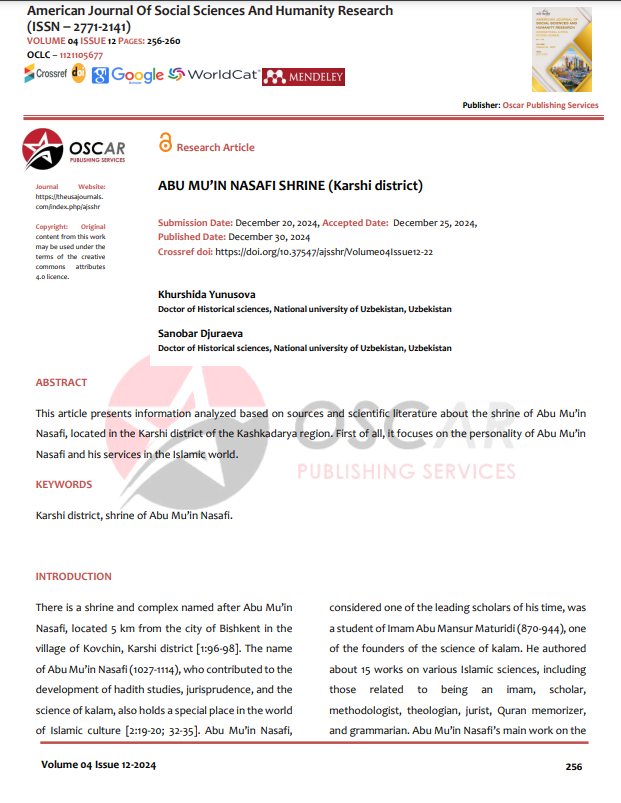ABU MU’IN NASAFI SHRINE (Karshi district)

There is a shrine and complex named after Abu Mu’in Nasafi, located 5 km from the city of Bishkent in the village of Kovchin, Karshi district [1:96-98]. The name of Abu Mu’in Nasafi (1027-1114), who contributed to the development of hadith studies, jurisprudence, and the science of kalam, also holds a special place in the world of Islamic culture [2:19-20; 32-35]. Abu Mu’in Nasafi, considered one of the leading scholars of his time, was a student of Imam Abu Mansur Maturidi (870-944), one of the founders of the science of kalam. He authored about 15 works on various Islamic sciences, including those related to being an imam, scholar, methodologist, theologian, jurist, Quran memorizer, and grammarian. Abu Mu’in Nasafi’s main work on the science of kalam is “Tabsirat al-adilla” (When the Evidence Speaks), which is considered the largest and most significant rare work of great scientific and practical importance. The section on religious fundamentals in this work is explained based on the method of his teacher Maturidi [3:262-265]. For this reason, Abu Mu'in an-Nasafi gained fame in the world of Islamic scholarship under the name “Sahib atTabsira”. Another valuable aspect of the work is that it contains important information about numerous scholars who were active in Transoxiana during that period.
